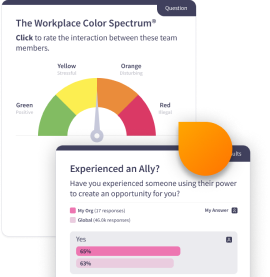
Protecting What Makes Us Unique
Course Video Preview
An introduction to how to to protect your IP.Course Description:
This course empowers you with the knowledge to recognize, respect, and safeguard intellectual property. Whether you’re a researcher, marketer, software developer, or part of the administrative team, understanding IP ensures we can all contribute to protecting the assets that drive our success.Key Concepts:
- The four main types of intellectual property: patents, trademarks, copyrights, and trade secrets
- Your role in protecting company IP and why it matters
- How to recognize potential IP issues in everyday work
- When and how to report IP-related concerns
Why It Matters
IP issues can surface in unexpected ways—sharing an idea too early, using unlicensed content, or missing red flags in contracts. By learning how to spot and address risks, you’ll help safeguard our innovations and strengthen our long-term success.Course Features
- Access to our Anonymous Ask the Expert tool
- Rich video scenarios based on real-world events
- Built-in employee sentiment surveys
- 50+ Machine Translation Options
- Optional program timer
- Policy acknowledgement tool
- Extensive customization options

Lessons
What is Intellectual Property?
Patents
Trademarks
Copyrights
Trade Secrets
The Impact of Artificial Intelligence (AI) on IP
Confidentiality and Public Disclosures
Our Policies, Procedures, and Ways to Report
Protecting IP is a Collective Responsibility
Relevant Courses
Complementary Microlessons
Recommended Resources
From ‘Ask the Expert’
Emtrain’s Ask the Expert feature enables users to ask questions about compliance, bias, harassment, and diversity & inclusion as they come up. It’s all confidential, and answers are sent straight to their inbox. View some of the example questions below and see the Experts answers.
Q
What are the four main types of intellectual property I need to understand?
The four types are patents, trademarks, copyrights, and trade secrets. Each protects different kinds of assets, from inventions and branding to creative works and confidential business information.
Q
How does artificial intelligence impact intellectual property rights?
AI tools can create content, code, or designs that may involve copyright or trade secret issues. Employees must verify ownership, licensing, and company policy before using AI-generated outputs in their work.
Q
Why is it risky to use internet images, articles, or code without permission?
Unlicensed use can lead to copyright infringement, lawsuits, and reputational harm. Even 'free' content often has license requirements that must be followed.
Q
How can employees accidentally put intellectual property at risk?
Common risks include sharing confidential ideas too early, emailing sensitive files to personal accounts, reusing work from a prior employer, or overlooking red flags in contracts.
Q
What should I do if I suspect intellectual property is being misused?
Report the concern right away through the company’s official reporting channels. Early reporting prevents bigger risks and shows a commitment to protecting company assets.
